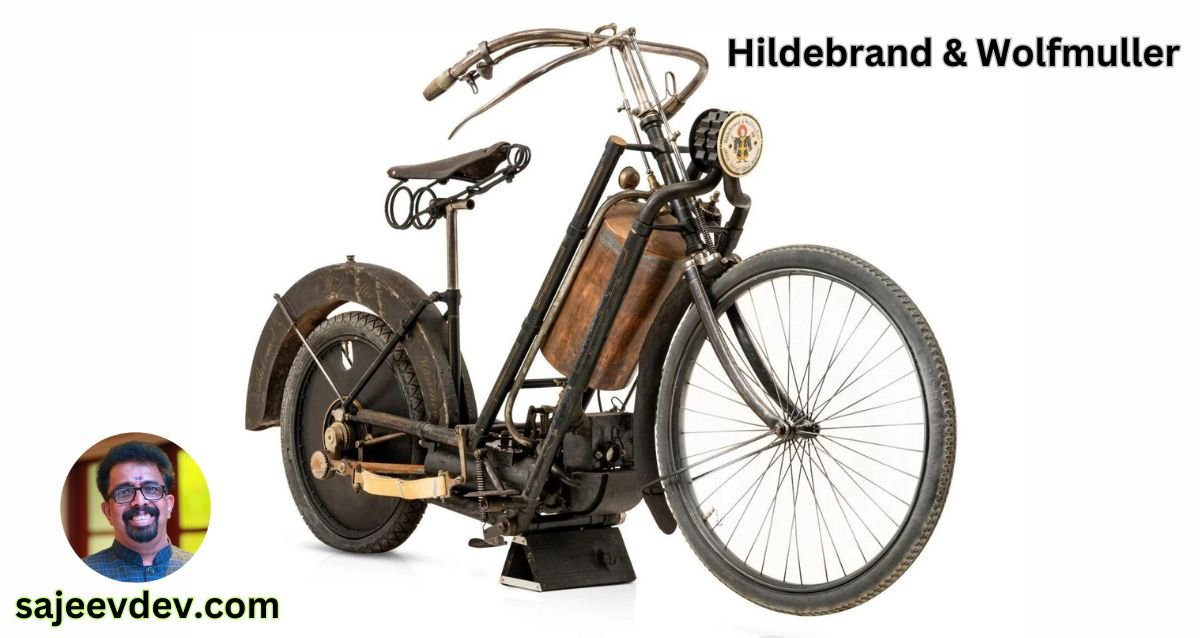The Hildebrand & Wolfmüller motorcycle, introduced in 1894, holds the distinction of being the first-ever production motorcycle in the world. Its groundbreaking design, extreme rarity, and historical significance have made it one of the most valuable motorcycles ever, often fetching prices as high as $3.5 million when they come up for sale in rare auctions. This early motorcycle is not just a collector’s item but also a symbol of the dawn of motorized transport.
Origins and Creation
The motorcycle was developed by Heinrich and Wilhelm Hildebrand, two German engineers who had previously worked on steam-powered vehicles, alongside Alois Wolfmüller, an inventor and mechanic. They collaborated in the early 1890s to create a two-wheeled vehicle powered by an internal combustion engine, at a time when most vehicles were still horse-drawn or steam-powered.
After extensive experimentation, the Hildebrand & Wolfmüller motorcycle was patented in 1894, marking the official birth of the “motorrad” (motorcycle). Their innovation was historic as it moved beyond the experimental phase of earlier motorized bicycles, creating the first vehicle designed and produced specifically for mass consumption.
Technical Specifications
The Hildebrand & Wolfmüller featured several revolutionary design elements that were ahead of their time:
- Engine: The motorcycle was powered by a two-cylinder, four-stroke engine with a displacement of 1,489 cc, which was large by modern standards. It produced around 2.5 horsepower and could propel the motorcycle to a top speed of approximately 28 mph (45 km/h).
- Frame and Wheels: It had a steel frame and wheels that were similar to bicycles of that era. The rear wheel was driven by the connecting rods from the engine, a feature that made it distinct from later chain-driven designs.
- Water-Cooled Engine: A water-cooling system was used to prevent the engine from overheating, which was an advanced feature for its time. The water tank was incorporated into the frame, showing the forward-thinking design of the motorcycle.
- Innovative Transmission: Instead of the chain drive that would later become common, the Hildebrand & Wolfmüller used a direct-drive system connected via a rubber belt. This early form of power transmission was another first in motorcycle design.
- No Clutch or Pedals: Interestingly, the bike did not have a clutch or pedals, so the rider would have to run alongside the motorcycle to start it, then hop on once it gained enough momentum.
Rarity and Historical Value
The Hildebrand & Wolfmüller was only produced for a few years, between 1894 and 1897, before the company went out of business due to financial difficulties and a lack of market demand at the time. It is estimated that fewer than 200 units were made, and even fewer survive today. This extreme rarity, combined with its significance as the first mass-produced motorcycle, contributes to its value.
The remaining models are mostly housed in museums or private collections, making them highly sought after by collectors. Their value has increased exponentially, with one example reportedly selling for $3.5 million at an auction, though such sales are rare due to the limited number of existing models.
Cultural and Technological Impact
The Hildebrand & Wolfmüller marks a key point in automotive history, bridging the gap between the steam-powered era and the age of internal combustion engines. It paved the way for future motorcycle designs by standardizing elements like the two-wheeled frame and the use of an internal combustion engine.
Although the Hildebrand & Wolfmüller did not achieve widespread commercial success, it demonstrated the potential for motorcycles as a mode of transportation. Over the following decades, engineers built on its pioneering design, refining and improving the motorcycle into the powerful, high-performance machines we see today.
Legacy in the Modern World
The Hildebrand & Wolfmüller is not just a relic of the past; it is a symbol of innovation and daring experimentation. Its groundbreaking design broke the mold of what was possible in transportation at the time and opened the door to the development of the motorcycle industry as we know it. Enthusiasts and historians today revere the Hildebrand & Wolfmüller for its combination of simplicity, ingenuity, and its role as a harbinger of the motorized world.
Collectors and museums that are lucky enough to own one of these motorcycles treasure them as one of the most important pieces of mechanical history. While few people will ever get the chance to ride one, the Hildebrand & Wolfmüller remains a touchstone for understanding the evolution of modern transportation.
The Hildebrand & Wolfmüller motorcycle represents a landmark in automotive history as the world’s first production motorcycle. Its engineering innovations and its rarity make it one of the most coveted collector’s items. Despite its limited production run, its legacy continues to influence the design and function of modern motorcycles, and its value remains a testament to its importance in the history of transportation.



